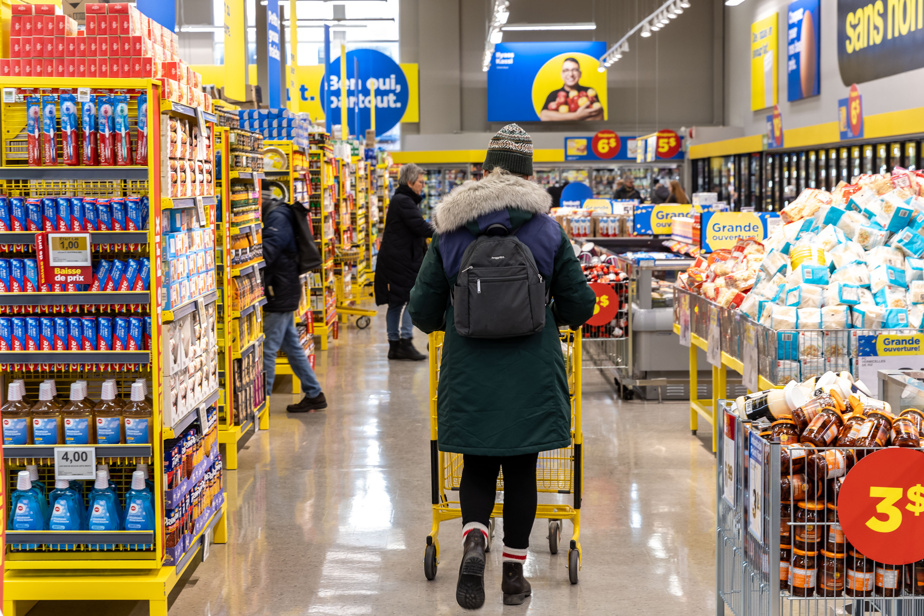It’s not just broke college students who subsist on instant Ramen noodles, spaghetti, or pre-made sauces. A sign that the majority of consumers want to save money, these food categories are experiencing a meteoric rise in popularity at the grocery store where nearly six out of ten items are sold on promotion. Never seen.
What there is to know
Nearly six out of ten foods currently sold in grocery stores are on promotion.
Quebecers are trying to save money by buying cheaper products like Asian-style pasta and instant noodles.
The advertising booklet remains the preferred method for bargain hunters.
Consumers are eating out less and are turning to grocery store convenience counters.
“A proportion of 57.7%, we have never seen that! We have never seen so many promotional activities,” exclaimed Francis Parisien, senior vice-president, SME sales Canada for NielsenIQ, during a conference entitled “The consumer at the time of choice”, presented as part of an event organized by the Conseil de la transformation agricole du Québec (CTAQ), Thursday in Montreal.
“In 2008, at the end of the last great recession, 36% of the items sold were on promotion,” he explains. Shortly before the pandemic, this proportion was generally below 50%. It decreased significantly during COVID. Grocers then limited promotions to avoid shortages. Two years ago, discounts returned to the landscape. The proportion therefore increased to 54.7% then to 55.4% in 2022.
Noodles, rice and spaghetti on the menu
And according to the figures presented by NielsenIQ, many Quebecers put spaghetti topped with prepared sauces or Asian noodles on their plate. Nearly 50% of households are currently purchasing sauces to enhance their Italian dishes, an increase of five points compared to last year. Instant Asian noodles are found in the pantries of 31% of families, an increase of three points.

PHOTO JOSIE DESMARAIS, THE PRESS
Mountain of ramen noodle packets displayed prominently in a grocery store display
Retailers seem to have understood this. The mountains of packets of ramen noodles displayed in plain sight in the displays at the entrance of certain low-cost brands clearly illustrate this craze. For Mr. Parisien, this is the symbol of the low-cost solution sought by consumers.
There are more Quebecers, [outre] students who lack money, who are currently eating Asian noodles.
Francis Parisien, Senior Vice President, SME Sales Canada for NielsenIQ
“And in pasta, we have never seen an increase like that,” says Mr. Parisien bluntly, adding rice and ready-to-serve canned soups to his list.

PHOTO JOSIE DESMARAIS, THE PRESS
Many Quebecers put spaghetti topped with prepared sauces on their plates, according to NielsenIQ data.
“My colleagues in the United States even tell me that people add water to soup already ready to serve to make more. Clearly, people are looking for solutions [pour économiser]. »
Even canned dumpling stew is seeing a resurgence in popularity with 43% growth.
The choice of cuts of meat also proves that consumers want to avoid having too high a bill. Nearly 25% of Quebecers opt for cheaper solutions. “We see more chicken drumsticks than breasts, more stew cubes than flank steak,” observes Francis Parisien.
Quebecers attached to their advertising book
And those who question the relevance of advertising brochures should know that they remain the “first destination” for 86% of consumers looking for deals.
64% of Quebecers say they look at all the pages of several circulars. This is higher than what we see in Ontario with 54%. Quebecers still really like flyers. We use it more than the rest of the country to plan our purchases for the week.
Francis Parisien, Senior Vice President, SME Sales Canada for NielsenIQ
This interest does not seem to be about to dry up since 18% of Quebecers plan to use this tool even more in the next 12 months. Currently, 56% of people consult the paper version, 64% online and 22% use their applications.
No more sushi…grocery store
While they browse the aisles in search of low-cost foods, consumers are also looking to treat themselves. “We cannot prepare all our meals,” emphasizes Mr. Parisien. We are seeing growth in a category that has not seen much of it recently: ready-to-eat. »

PHOTO JOSIE DESMARAIS, THE PRESS
Nearly 25% of Quebecers opt for cheaper cuts of meat, according to NielsenIQ.
However, there are losers in the equation: restaurants. Nearly half of consumers have reduced their trips out to eat, while 18% have pizzas or other meals delivered less often. “You may eat less sushi at restaurants, but you buy more at the grocery store. »
Calling all
Have you changed your grocery shopping habits? How ?
